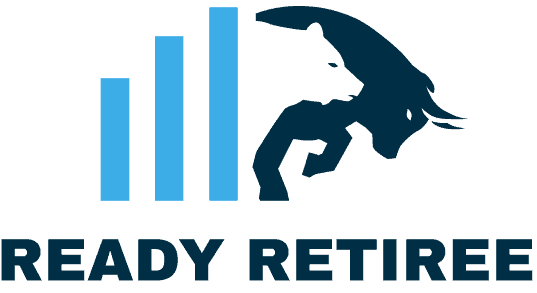Retirement can and should be a reality for everyone. After all the hard work and dedication, you deserve to rest and enjoy life. No matter what stage you are at in your career, planning for retirement is critical. As one of the most successful investors of all time, Warren Buffett stated, “Risk comes from not knowing what you are doing.” This article will provide the information you need to reduce retirement investment risk and help you understand your retirement options.
Choosing a retirement plan depends upon many factors that are personal to you. One size does not fit all. Below is information that will help guide you on your search for the best retirement plan.

401(k)
401(k)s are employer-sponsored retirement accounts. One of the advantages of this type of account is that you make your investment with pre-tax income. This means that you are saving for retirement and also deferring some of your current year’s tax expense. Your investment will be growing tax-free until you retire. Another advantage is that some employers match investments. This matching money can be as much as 6% of what you invest. The United States Internal Revenue Service (IRS) has rules in effect regarding the amount of money you can invest yearly in a 401(k). For 2021, the investment limit is $19,500. If you are over 50, this contribution level is $26,000 and you can also invest a $6500 catch-up contribution. Usually, it takes several years for the money your employer contributes to become vested, or fully available for withdrawal by you. One disadvantage of a 401(k)-retirement plan is the 10% penalty imposed by the IRS for early withdrawal (before age 59 ½). You will also pay taxes on the amount withdrawn. Taking a loan against the 401(k) might be a better option if the money is needed. Similarly to a 401(k), employees in the education and nonprofit sector may be eligible for 403(b) accounts. Organizations using 403(b)s include schools, hospitals, and churches. Government employees can contribute to 457(b) plans. This would include people like police officers, firefighters, and other types of civil servants. Similarly, Federal employees may be able to contribute to the Federal Employees Retirement System.
Individual Retirement Account (IRA)
An Individual Retirement Account is another retirement option, especially if your employer does not offer a 401k plan. People who have reached the maximum investment limits in the 401k accounts may also invest in an IRA.
Individual Retirement Accounts have investment limits also. In 2021, this limit is $6,000. If you are 50 or older, this amount increases to $7,000. Investors are not required to pay taxes on investment gains (increased value of the investment) while the money is invested. Some taxpayers can reduce their taxable income by
Traditional vs Roth Individual Retirement Account
The two types of Individual Retirement Accounts discussed most frequently are the traditional and Roth Individual Retirement Accounts. Both types of accounts must be funded with earned income. With a traditional IRA, your contributions are made with pre-or after-tax dollars and the investment grows tax-free. If the account was funded with pre-tax dollars, you will be taxed as regular income when you begin taking the funds as income. If you expect to be in the same or a lower tax bracket when you retire, a traditional account may make the most sense for you.
A person who expects to be in a higher tax bracket at retirement may want to consider
Self Employed Retirement Plans
If you are self employed, several retirement plan options are available, including both traditional and Roth IRAs. If you left a job where you had an Individual Retirement Account to start a new business, you may be able to roll over this account to your new venture.
A Solo 401(k) is available to a self-employed individual with no employees except perhaps a spouse. The IRS calls a Solo 401(k) a one-participant 401(k). Solo 401(k)s are attractive to people who want to save a great deal of money in certain years. Another advantage is that you do not have to contribute every year. You must have an employee identification number to open a Solo 401(k). The 2021 contribution limit to the Solo 401(k) is $58,000. If you are 50 or older, you can also invest an additional $6,500 catch-up contribution. Within the Solo 401(k), you can choose either a traditional or Roth plan, depending upon your tax needs. Solo 401(k)s also require a certain amount of paperwork and IRS reporting.
If you are self-employed with no employees or just a small number of employees, a Simplified Employee Pension (SEP) Individual Retirement Account plan is available to you. The SEP accounts require less paperwork than Solo 401(k)s. However, the business owner must make equal contributions to eligible employees as well as themselves. This does not mean the same dollar amount contribution, but the same percentage of salary contribution. If you pay yourself 10%, you must contribute 10% for each employee. You don’t have to contribute every year, but every year you contribute for yourself you also contribute for employees. To become eligible, an employee must work for you for three of the last five years, earned $600 or more, and be 21 or older. SEP account yearly contributions must be less than the lesser of 25% of compensation or $58,000 in 2021. There is no Roth option and no catch-up contribution for those over 50 with this plan.
If you are the owner of a business of fewer than 100 employees, a Savings Incentive Match for Employees (SIMPLE) plan may be an option. Although these SIMPLE accounts are easy to set up without an excessive amount of maintenance, these plans do require mandatory employee contributions. SIMPLE accounts also have lower employee contribution limits. In 2021, employee contribution limits cap at $13,500 for those under 50 with an additional $3,000 catch-up contribution for those over 50. Another advantage to the employer is that there is a tax deduction for contributions to employee’s accounts. Roth options are not available in these plans and there are penalties for early withdrawal.
How to Open Retirement Accounts
If your employer offers retirement accounts, they normally handle all the paperwork. However, you still need to decide how much money to invest and be well informed about the rules and guidelines. If you open your retirement account, you may want to use a professional broker. Several online services are available. If you desire a great deal of guidance, you will want to pay for an expert. If you are comfortable with investment decisions and want to direct your accounts, low-fee brokers are available. Understanding how comfortable you are with risk is another important aspect. You are
The best retirement plan is the one that fits your individual needs. Perhaps you do not want to rely on Social Security or become a burden to your children. Or perhaps you just want to enjoy a long and happy retirement. Whatever the reason, there are many retirement plans and resources available to you. Talking to your Human Resource Advisor or a simple online search are good ways to begin your quest for a long and happy retirement.






